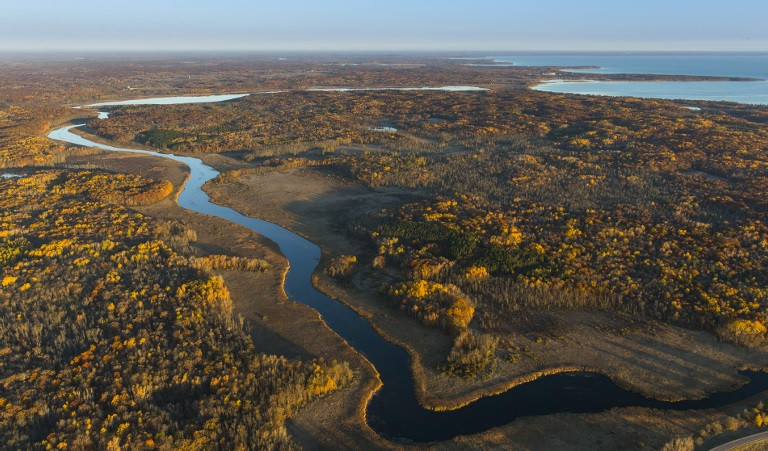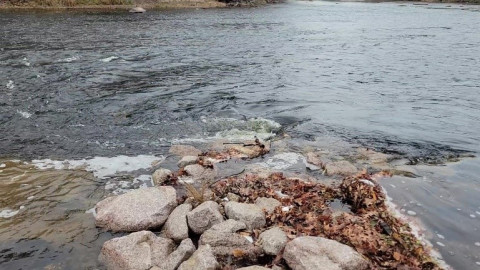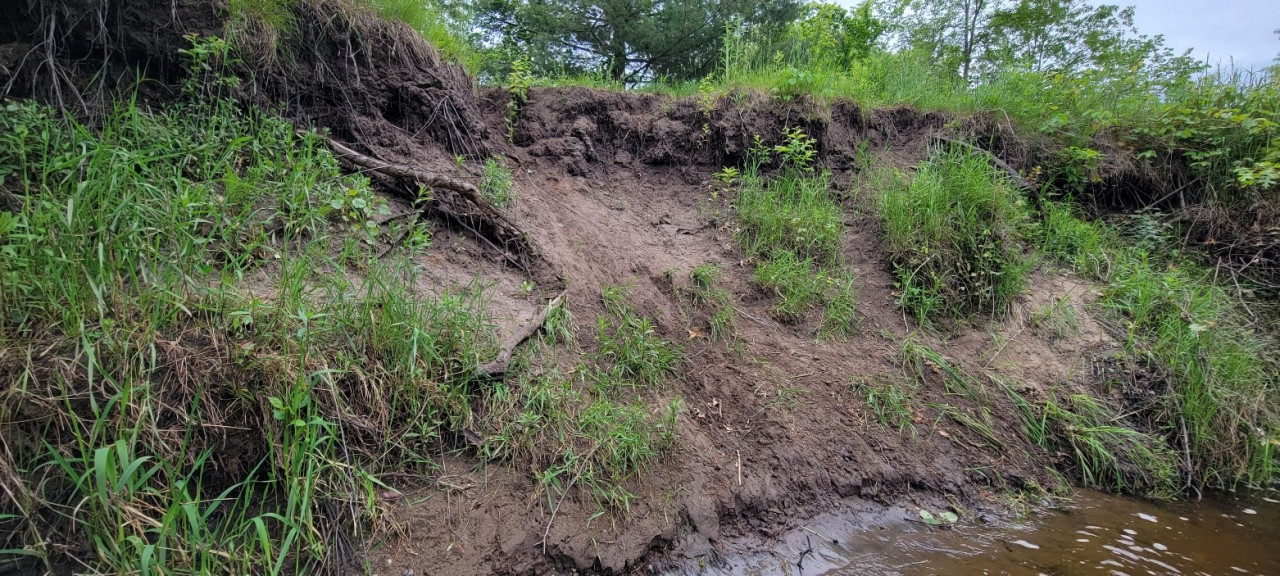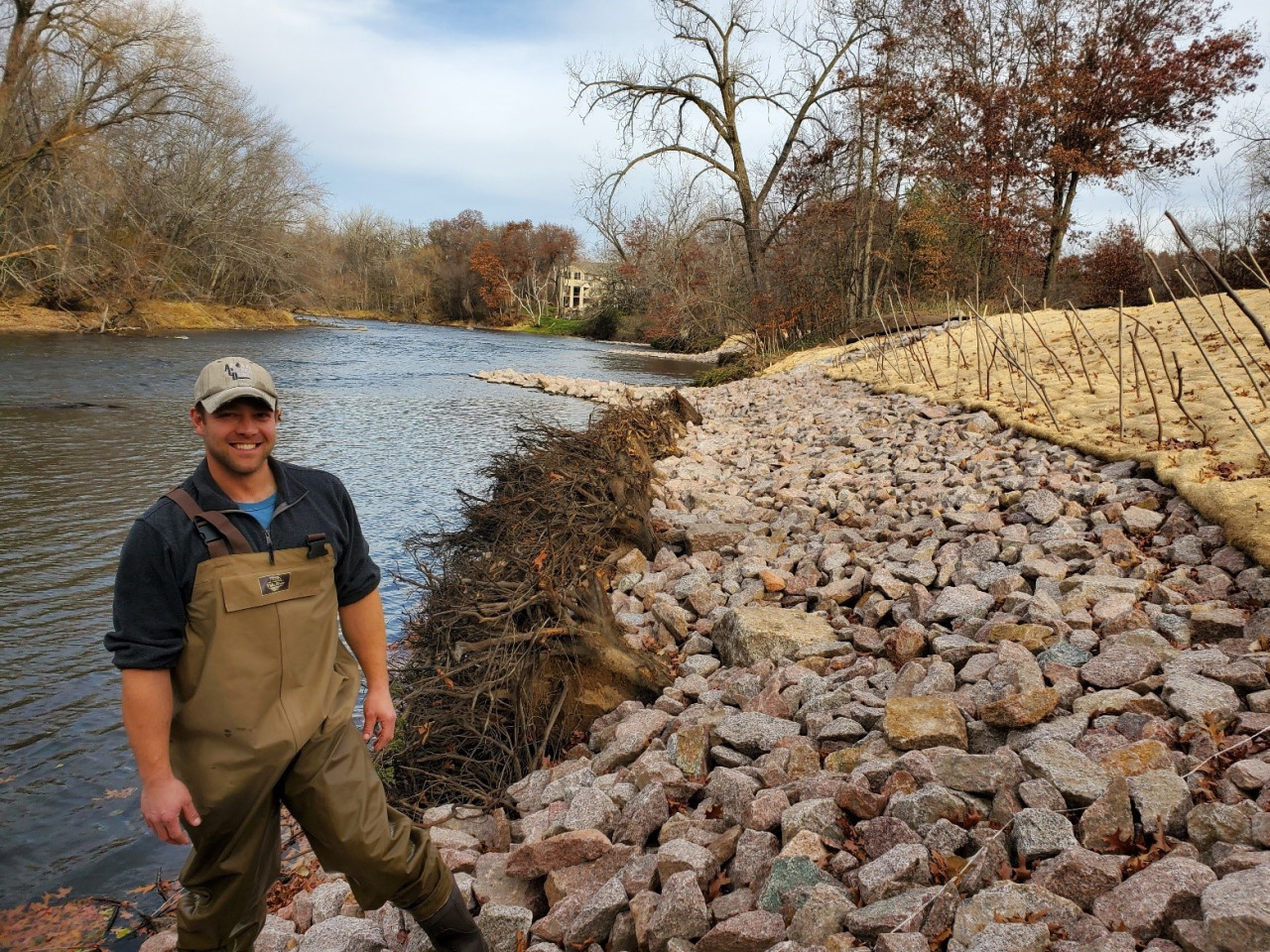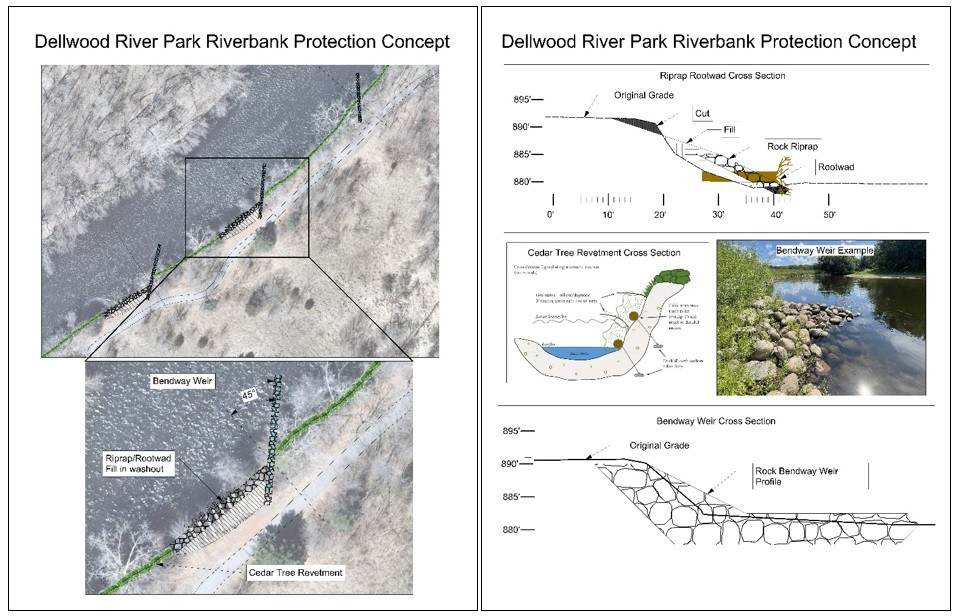A hallmark of ACD's natural resource work has included the stabilization of eroding riverbanks and the enhancement of native vegetation in adjacent riparian and floodplain areas. These activities improve water quality in the river and habitat quality along it. Included in the goals of our Phase 2 grant for Rum River habitat enhancement through the Outdoor Heritage Fund of the Clean Water Land and Legacy Amendment is the improvement of in-stream habitat in the Rum River channel. This is a new endeavor for ACD that presents an exciting opportunity to expand our work and our partnerships within the Rum River Corridor.
Though we are over a century removed from the widening and scouring of the Rum River by the millions of logs cut during the Minnesota timber boom, the effects of that industry still remain. Rivers used as log arteries were made wider and more consistent to ensure the smooth sailing of logs downstream. In more modern times, towns piped rain water directly to the river from impervious areas via stormwater conveyance systems. These rapid spikes in water input during storms exacerbate bank erosion, down-cutting, and sedimentation in the river at rates far beyond what was natural.
Due to this historical usage of the Rum River as a conveyance tool for wood and stormwater, habitat for fish, invertebrates, mussels, and other aquatic life remains lacking and out of balance. In the coming years we will be partnering with Anoka County Parks, DNR Fisheries, The Nature Conservancy and others to identify and enhance missing or deficient in-stream habitat. Secondarily, we will look for enhancement opportunities for game fish habitat near publicly accessible shorelines to improve access to quality shore fishing. For more information contact Jared Wagner, Water Resource Specialist, at
